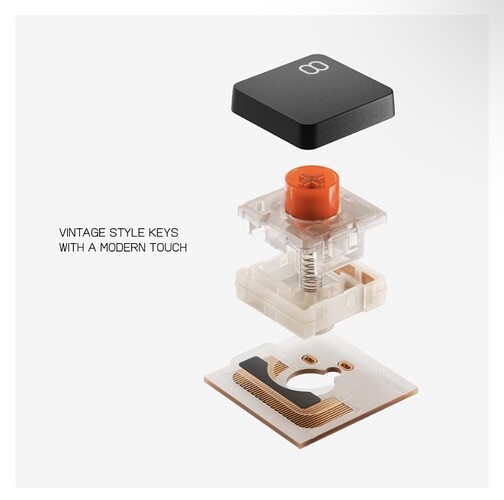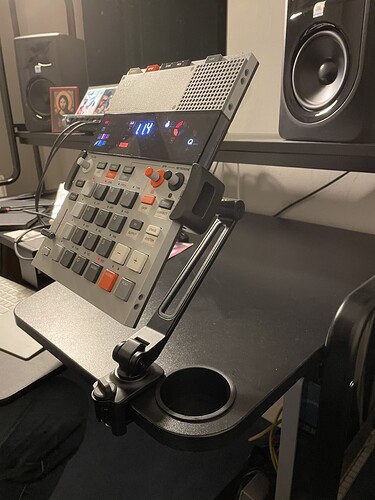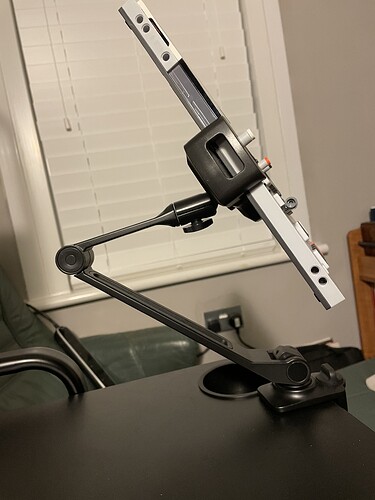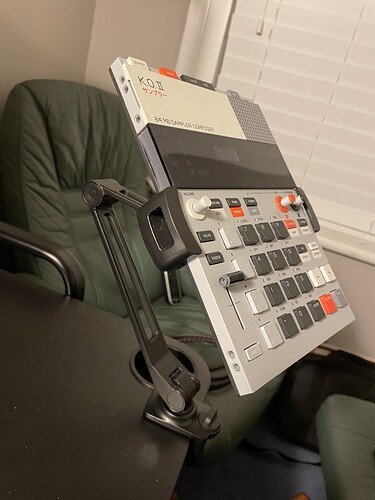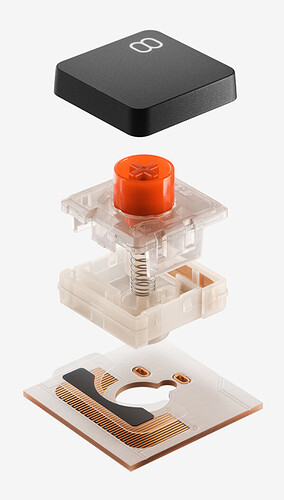The key velocity of the EP-133 is quite accurate. However, because the dynamics are too pronounced, I have set it to the HI (64-127) configuration.
And is the velocity per key (so you can record different velocities at the same time)?
yes
the pressure sensors i think are actually separate from the cherry keys
(i opened mine up awhile back and took a look around)
u can see the sensor sheet underneath the keys in my pics a couple posts up
Yes. I found this picture. The velocity is done via the black part underneath the cherry key:
I never have seen this done before! Another clever engeneering of the teenagers!
fwiw i’ve seen this same type of scheme
(separate pressure sensors for the velocity)
in a few older samplers, beat machines from the 80s and 90s
maybe not super common but definately not something that has never been done before.
not trying to take away from nobody obv. just trying to give credit where credit is due ![]()
All samplers are doing the same for their pads (MPC, machine, Push, etc.). I just have never seen this before with cherry keys.
Just wanted to show you guys a stand I’ve been using with my Ep133 k.o.ll.
I didn’t buy it specifically for the Ep133, but I’m trying it out. It’s a bit wobbly but that doesn’t really hinder me. Certainly looks very cool.
A lot of you have probably seen this already. I kind of skimmed through and probably missed some stuff, but a few big things here - 1. project back-up via the sample loader tool coming in the next few days/weeks 2. It’s a dual core CPU and one core isn’t even used yet https://www.youtube.com/watch?v=NlHk4HQDgaM&t=957s
Anybody using the SYNC out with DIN sync devices. i.e. Roland TR-606.
I’ve adjusted the SYNC options on the KOII to 24 which the TR-606 wants to see, but patterns don’t play on the TR-606 when I press play on the KOII.
Not sure if KOII needs type A or type B, so might be using the wrong style TRS to MIDI/DIN cable from the KOII to the TR-606.
I have an Elektron 3.5mm TRS to MIDI (I think is Type A) and 2 other 3.5mm TRS to MIDI (same not sure brand, so can’t find the type) neither seem to work.
If the TR-606 SYNC is set to OUTPUT and the KOII is sending SYNC with the cables I have, the TR-606 will have an LED flashing and the pattern will be playing super fast, but still no reaction to Play/Stop from the KOII and can’t change tempo or pattern.
I just received my EP-133, everything seems to work fine, keys, speaker, fader… But I have noticed that on the sensitive keyboard when using FX, when pressing the top part of the key it is very little sensitive, and pressing the bottom of the key the sensitivity is very high. Is this normal behavior for an EP-133 unit?
Thank you.
That’s normal I think. Mine does that as well.
Hi, it’s normal bevaviour.
Thank you, it seems that everything is fine then
a picture of the key mechanism.
you can see the pressure mechanism is only on the bottom half.
very cool design. I wouldn’t think key switches could have this functionality!
Very interesting, it looks like the aftertouch of midi keyboards like my Novation SL MK 3.
I’ve been using the ep133 for less than 1 day and I love its workflow. Thanks to some tutorial videos, in just a few minutes I was already controlling the ep133 comfortably.
Too bad about the low polyphony, I could do what I did with the po ko, mix percussion samples, to be able to reproduce both, for example, kick drum and hihat in a single sample.
It would be great in ep 133 to have a function that analyzes this in a pattern and in ep 133 it would mix samples generating new ones with the combinations of your pattern, so the volumes, effects, etc. could be adjusted before mixing them. Anyway it’s a great sampler, really fun!
I’m not gonna lie, the 64 MB of sampling is very limited. Also, not being able to chain between patterns is disappointing. I really like the device, except for these crucial features. It’s really nice if you want to use the sequencer and record MIDI from it to another device that has the capability of chaining and more sample memory. They should at least give you the possibility of saving 999 samples if that’s the max. I’d be astonished if someone could get 999 samples on the device. As for the chaining, it just doesn’t make sense that the pocket operator can chain but this can’t. This is just from my experience with it so far.
Having extensively tested it and discussed about it IRL with some beatmakers, this odd device sure has its quirks. All its quirks are balanced out by the sound it has, tho.
One thing that keep coming back, tho, is TE’s ethos. The « limitations are great for creativity » is basically the new « liberalism is great for technical innovations ».
In this very case, limitations are just marketing to cover up cost and margins. Which would be cool if TE didn’t try to create a whole narrative out of this.
No SD card is inexcusable. No resampling is just a joke. The weak fader is proof of bad engineering - which is comical enough.
TE has probably taken note already. And here’s some healthy hope that TE’s future holds a revamped ethos and an updated way to craft great gear.
Still. Fun piece of gear. Not groundbreaking, but fun!
There’s so much I truly adore about the KO II. I think it’s one of the most intuitive sequencers I’ve used in a long time. I can’t believe it’s from the same company that made the OP1 sequencers. I’m just so over their disregard for user feedback. I know they don’t have software teams the size of Elektron/Akai/Roland, etc. But look at companies like Oxi, Synthstrom, even Polyend. These tiny companies move so quickly to make their users happy. TE aggressively dismisses this ethos.
I agree, I hope the dent in their reputation over the KO II’s issues corrects the ship, but I highly doubt it. We were promised at backup tool the first week of January. It’s almost March.
I honestly think it depends on what you are looking for, in my case I wanted to have a more advanced sampler than the PO KO, but without reaching the depth offered by, for example, a Roland SP 404. I already have a Roland MC 101 and the menu diving is something frustrating. They are more powerful but less intuitive equipment.
In my case I also want to get rid of small screens, I work with computers and I don’t want to continue looking at screens, or small screens and strain my eyes more, I also ruled out the Sonic Ware SmplTrek because of this.
Then there are the samplers that we find in the range of 300-399€, perhaps I have missed some but the most notable is the Novation Circuit Rhythm, which has an SD reader, but an 8-voice polyphony, instead of 12 on the PO EP 133, a simpler sequencer than the PO EP 133, and without the punch-in effects that made the PO KO so popular. It’s not perfect, but honestly in this price range I prefer what the EP 133 offers over the Novation Circuit Rhythm.
And about the limited capacity of 64mb, it is true that it is somewhat low, it is something that Teenage Engineering has accustomed us to, the OP-Z only had 32mb, but we all have a mobile phone all the time, and you can store tons of your favorite samples and sample them on EP 133 at any time, as I already do with my OP-Z with the Line module.
OK, 64 mB is not enough.
Akai MPC60 had a maximum of 1,500kB (two 750 kB chips).
Akai S20 - 1MB memory, expandable to 5MB or a maximum of 17MB.
Yamaha TX16W shipped with 1,5mB (expandable to 6mB).
All sound set of Yamaha romplers was about 2 mB.
The greatest of their time E-Mu Proteus racks had 32 mB of sound set ROMs.
…
Everything is relative, all depends HOW it is used.
